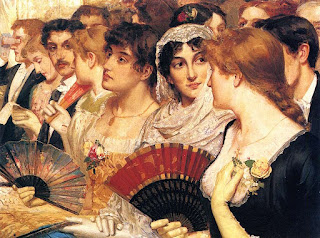History of Opera
Opera has its roots in the Renaissance period, which saw a renewed interest in ancient Greek drama and music. The first operas were created in Florence, Italy, in the late 16th century, by a group of musicians and poets known as the Florentine Camerata. They aimed to create a new form of music that combined drama, poetry, and music, inspired by ancient Greek tragedies. Their work paved the way for the development of opera as we know it today.
During the Baroque period, opera became one of the most popular forms of entertainment in Europe, with composers such as Claudio Monteverdi, Georg Friedrich Handel, and Johann Sebastian Bach creating masterpieces that are still performed today. The Classical period saw a shift towards more naturalistic and realistic operas, with composers such as Wolfgang Amadeus Mozart and Christoph Willibald Gluck leading the way.
The 19th century saw the emergence of Romantic opera, with composers such as Giuseppe Verdi and Richard Wagner creating epic and emotionally charged works that reflected the political and social changes of the time. In the 20th century, opera continued to evolve, with composers such as Benjamin Britten, Igor Stravinsky, and Philip Glass experimenting with new forms and styles.
One of the most significant challenges facing opera today is attracting new audiences, particularly younger audiences. To address this, many opera companies are experimenting with new ways to present the art form, such as using technology to create immersive and interactive experiences, or staging productions in unconventional spaces.
Another challenge facing opera is funding. Opera productions can be expensive to produce, and many companies rely on government funding and private donations to survive. Despite these challenges, opera continues to thrive, with passionate performers and audiences working together to ensure its continued success.
During the Baroque period, opera became one of the most popular forms of entertainment in Europe, with composers such as Claudio Monteverdi, Georg Friedrich Handel, and Johann Sebastian Bach creating masterpieces that are still performed today. The Classical period saw a shift towards more naturalistic and realistic operas, with composers such as Wolfgang Amadeus Mozart and Christoph Willibald Gluck leading the way.
The 19th century saw the emergence of Romantic opera, with composers such as Giuseppe Verdi and Richard Wagner creating epic and emotionally charged works that reflected the political and social changes of the time. In the 20th century, opera continued to evolve, with composers such as Benjamin Britten, Igor Stravinsky, and Philip Glass experimenting with new forms and styles.
Opera Today
Opera remains a vibrant and exciting art form today, with performances taking place in opera houses and theaters around the world. Many of the great operas of the past are still performed today, with productions ranging from traditional to avant-garde.One of the most significant challenges facing opera today is attracting new audiences, particularly younger audiences. To address this, many opera companies are experimenting with new ways to present the art form, such as using technology to create immersive and interactive experiences, or staging productions in unconventional spaces.
Another challenge facing opera is funding. Opera productions can be expensive to produce, and many companies rely on government funding and private donations to survive. Despite these challenges, opera continues to thrive, with passionate performers and audiences working together to ensure its continued success.
Conclusion
Opera is an art form that has a rich and fascinating history, with composers and performers pushing the boundaries of music, theater, and visual arts to create unforgettable experiences for audiences. While opera faces some challenges today, it remains a vital and exciting art form that continues to captivate audiences around the world. If you have never experienced the magic of opera, we encourage you to give it a try and discover the beauty and power of this incredible art form.
Image source: https://picryl.com/media/william-holyoake-in-the-front-row-at-the-opera-ef336d

Δεν υπάρχουν σχόλια:
Δημοσίευση σχολίου